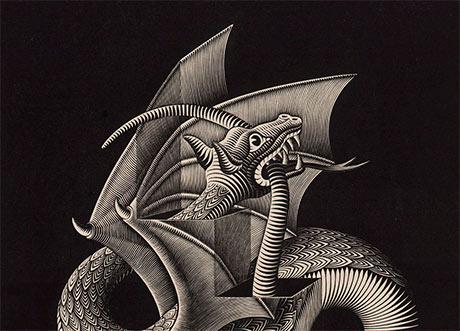
Woodcut
The woodcut is the oldest known graphic technique. The Chinese were cutting images into wooden blocks over 2000 years ago. Traditionally, a woodcut is made using wood from a fruit tree such as an apple or pear tree, which has a nice fine grain, making it robust yet soft enough to carve. All the wood apart from the image itself is cut away using gouges. The woodcut is a relief printing technique, whereby only the raised image left after the rest of the wood is cut away transfers the ink to the paper. Once the block of wood has been prepared, the artist uses a roller to apply ink to its surface. A sheet of paper is then laid on the block, and the ink pressed into the paper. The woodcutting technique differs from wood engraving in the sense that in the latter the image is cut along the grain of the wood, allowing more detailing.
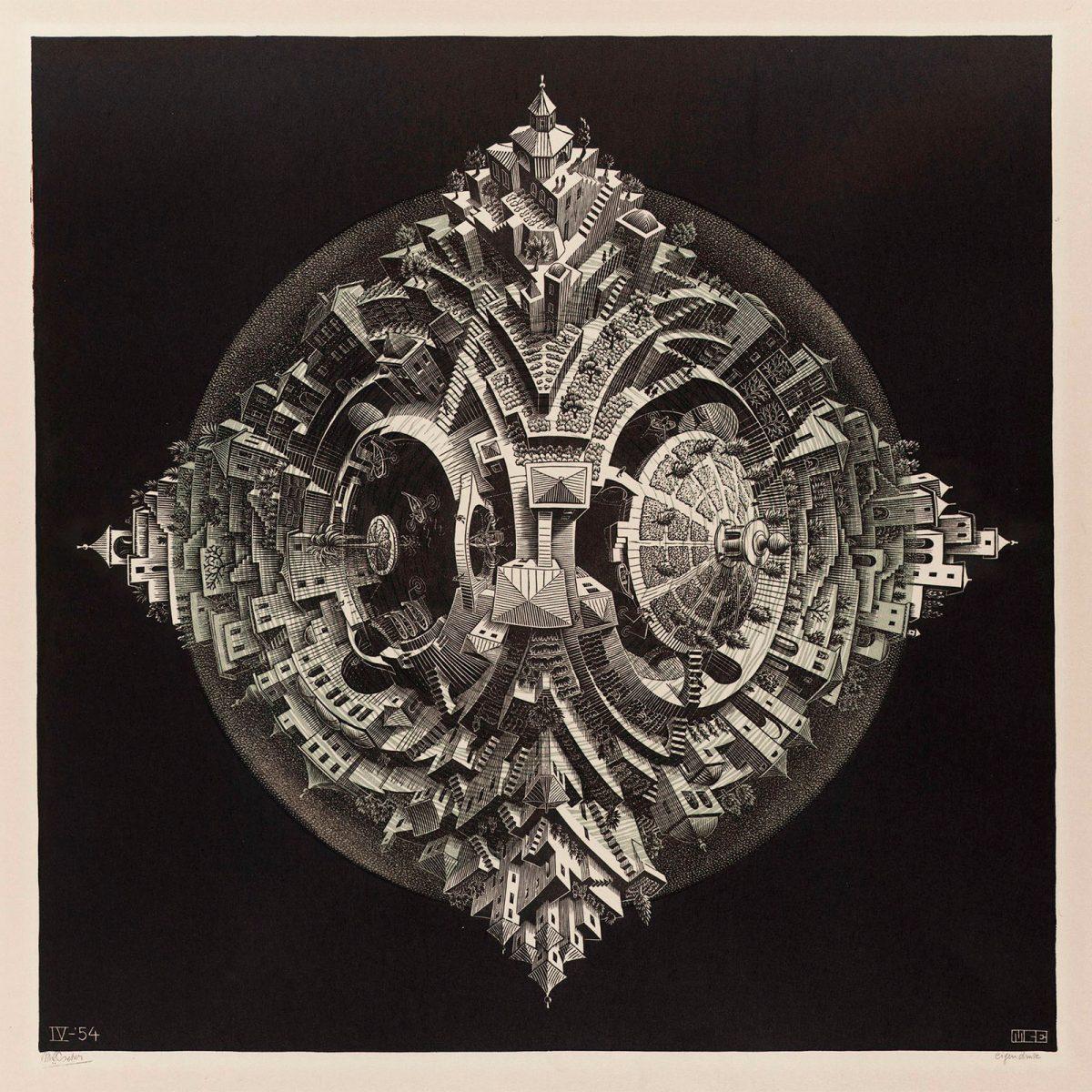
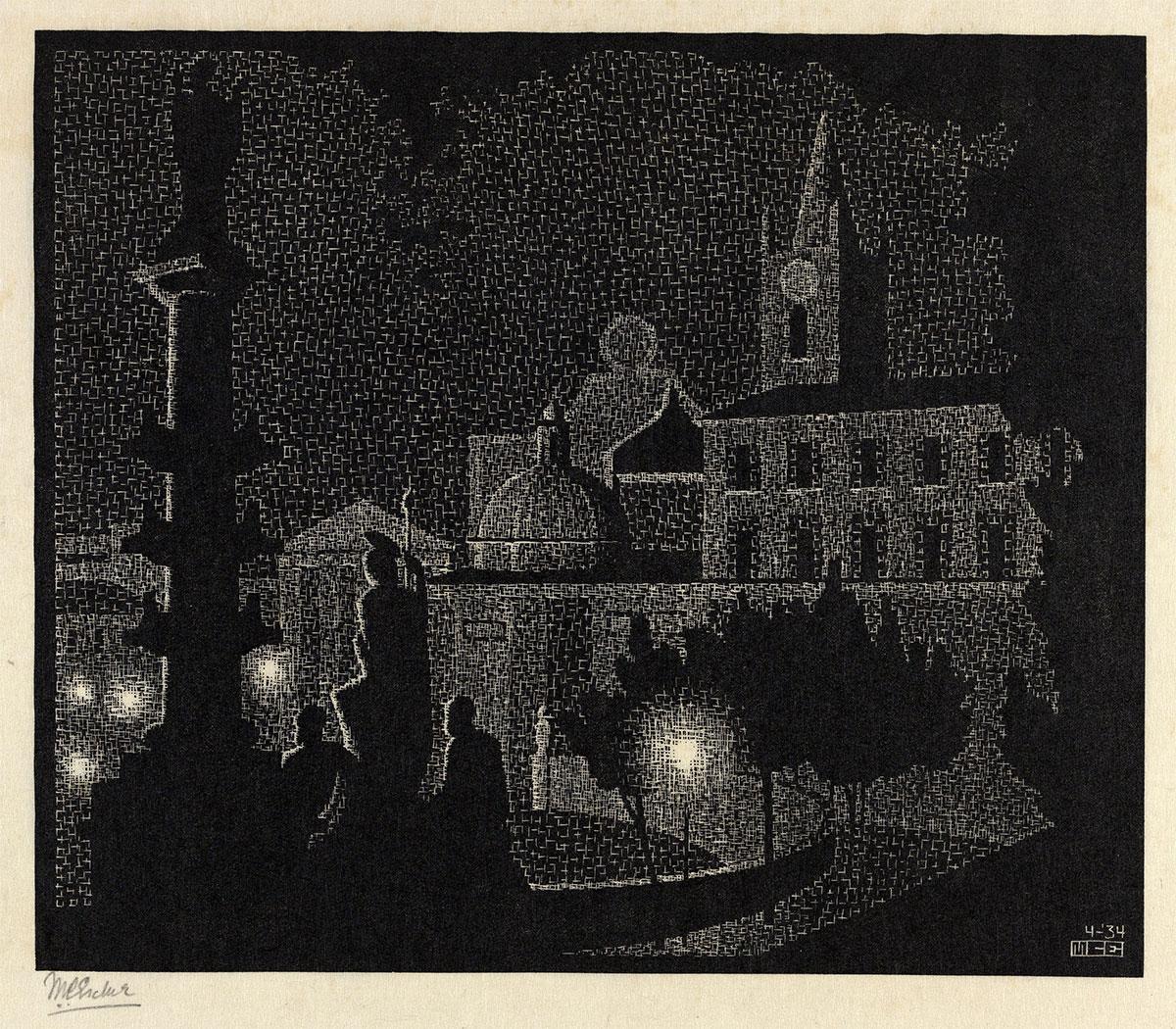
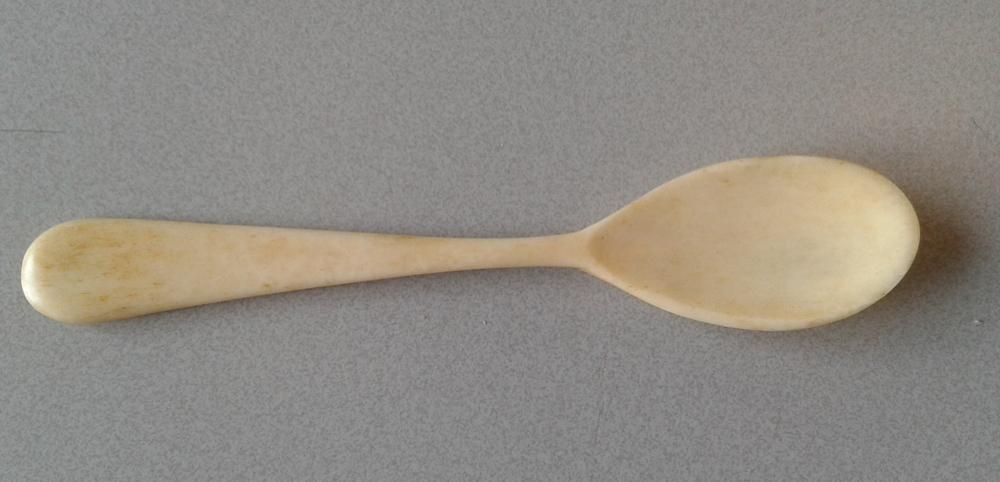
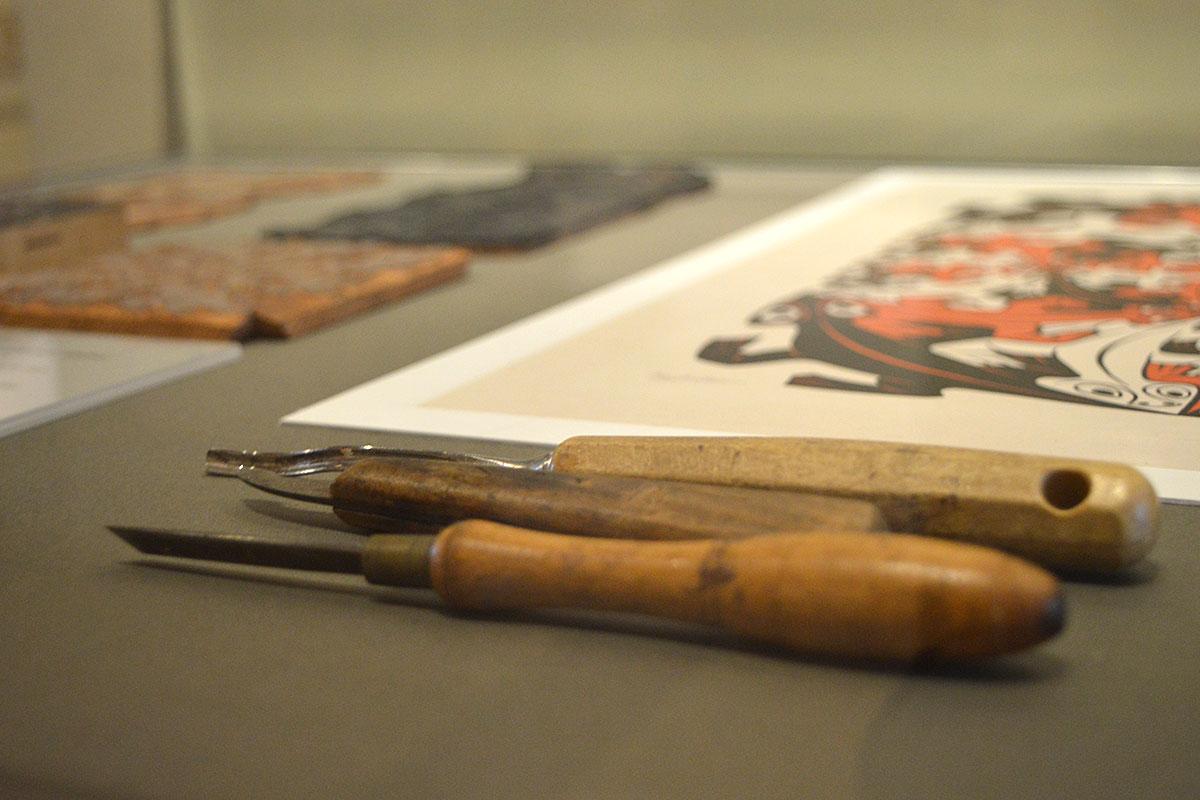
Escher did not work with a printing press but with a bone egg spoon which he used to rub the ink into the paper. This allowed him to determine how much the ink was pressed into the paper, so he could control the blackness of certain parts of the image. The less he cut away from the block of wood, the darker the print would be. He would need to go back and forth with his egg spoon to rub the ink into every square millimetre of the paper in order to achieve the deep blacks seen in the woodcuts from the Nocturnal Rome series (1934) or Tetrahedral Planetoid (1954), for example. Escher was highly skilled at the technique. His black is truly deep and silky-soft. He almost always applied just the right amount of ink to his prints – not too much, and not too little.
Unusually, Escher printed all of his woodcuts himself. He never used machines and had no assistants to help him. The 650 prints of Day and Night (1938) were therefore all made by Escher’s own hand. Escher generally used thin handmade paper, such as Japon. This very thin Dutch-manufactured paper absorbs ink much more readily than thicker paper. Escher would first dampen the paper to loosen the fibres, which made it even more absorbent. Less pressure would then be needed to transfer the ink from the block to the paper.
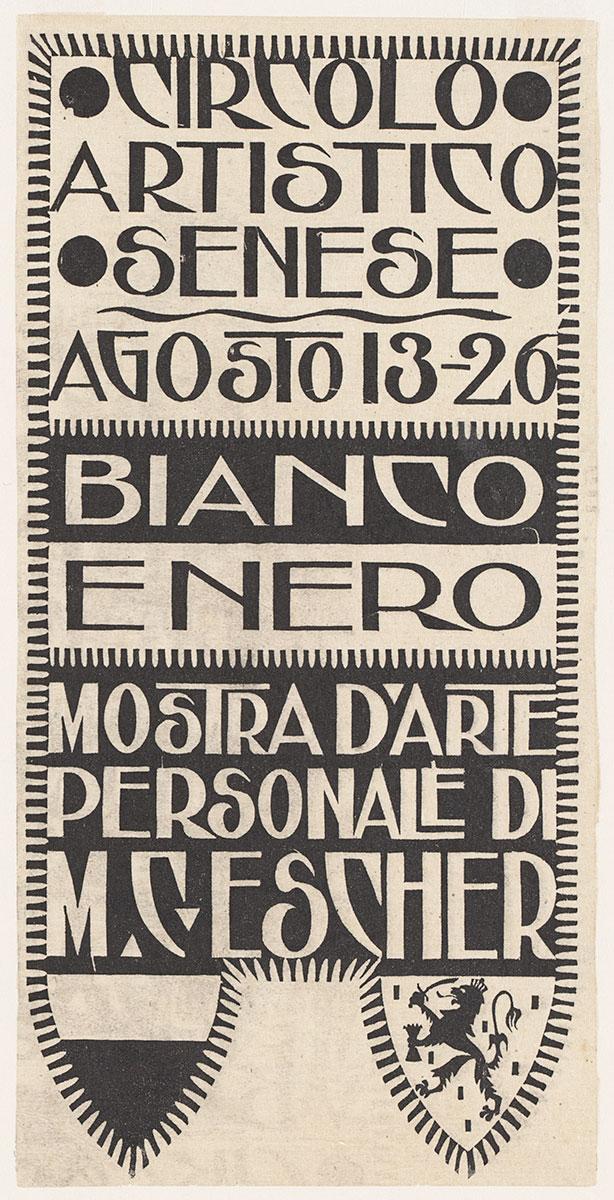
Since the print is a mirror-image of the woodcut itself, Escher had to cut his design in mirror-image too. He therefore had to turn everything around in his head, including any letters and numbers. He would often include his monogram, for example, and he also cut the date on which the work was made into the block.
History
The woodcut is the oldest known graphic technique. The Chinese were cutting images into wooden blocks over 2000 years ago. Initially, the image would be printed on fabric. Printing on paper was introduced later. Woodcuts were first made in Europe in the Middle Ages. Early highpoints of European woodcut printing include the work of Albrecht Dürer, Hans Holbein the Younger and Lucas van Leyden, and the chiaroscuro woodcuts created in the Renaissance. In chiaroscuro woodcuts, first introduced in Italy around 1516, an image on one or two blocks is printed using different coloured inks. Focusing on the light (chiaro) or shade (scuro) creates an illusion of depth due to the tonal contrasts.
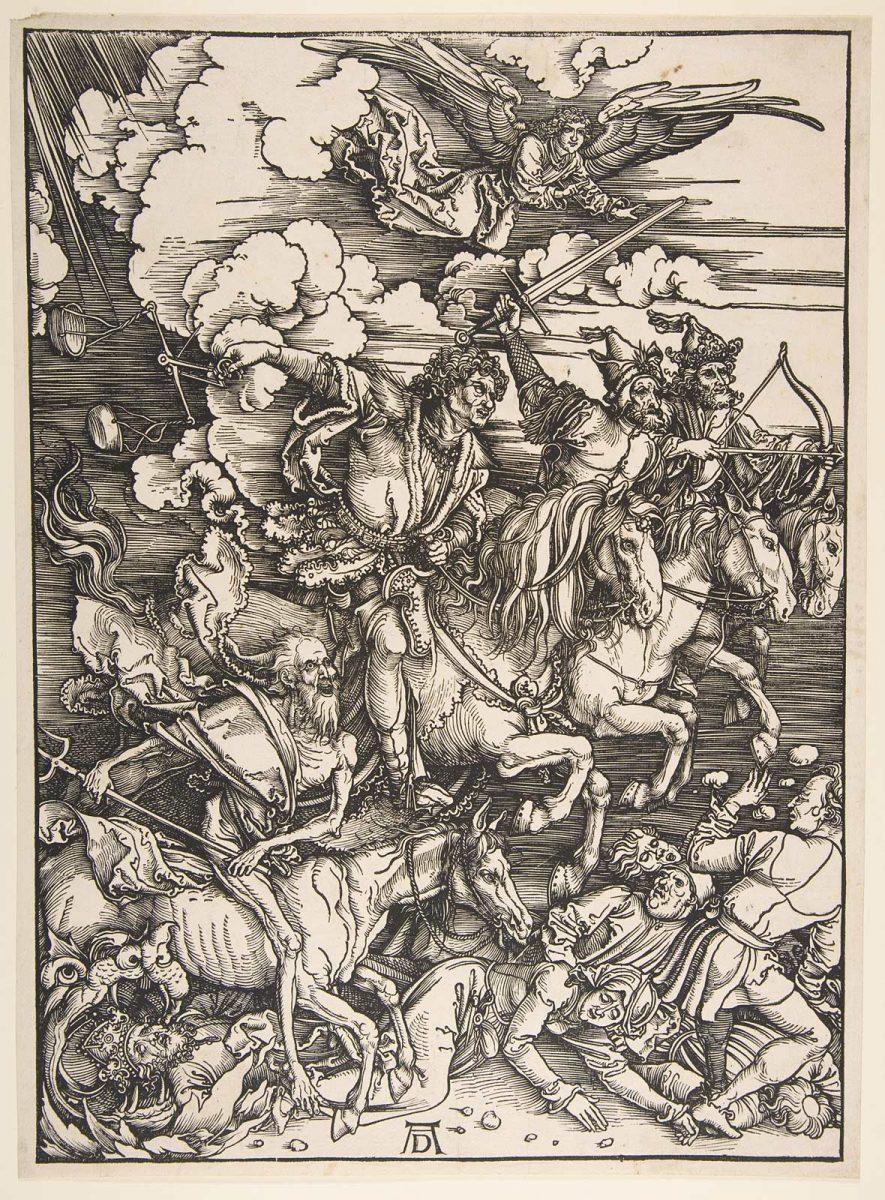
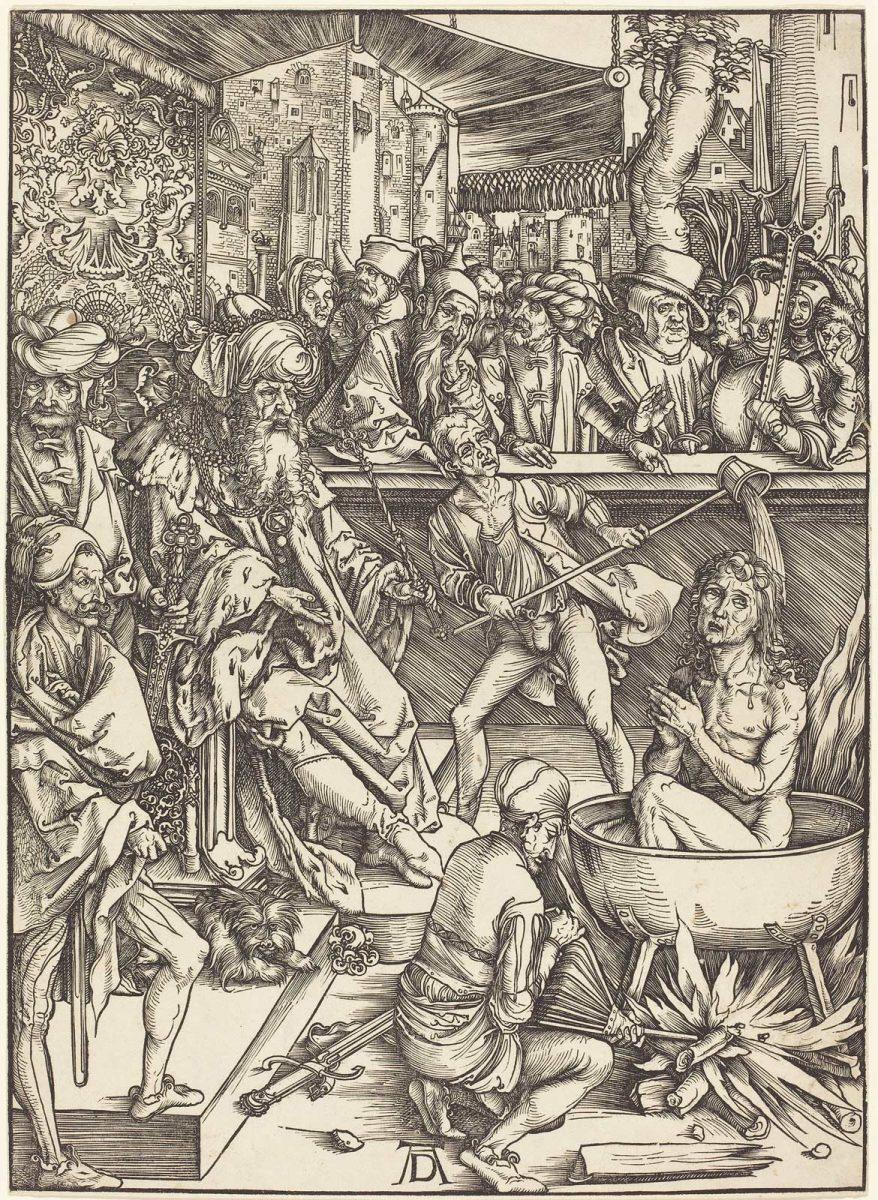
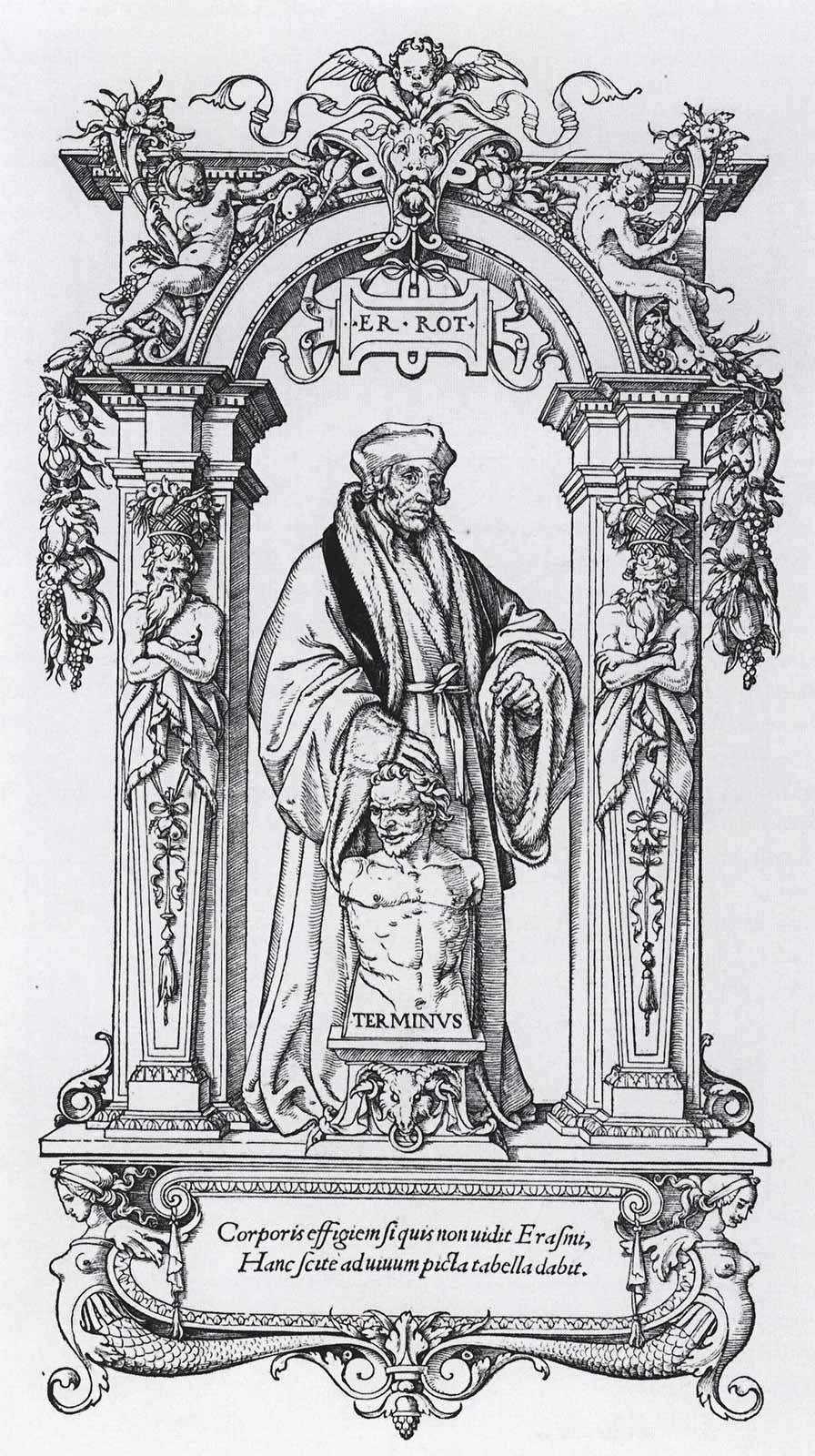
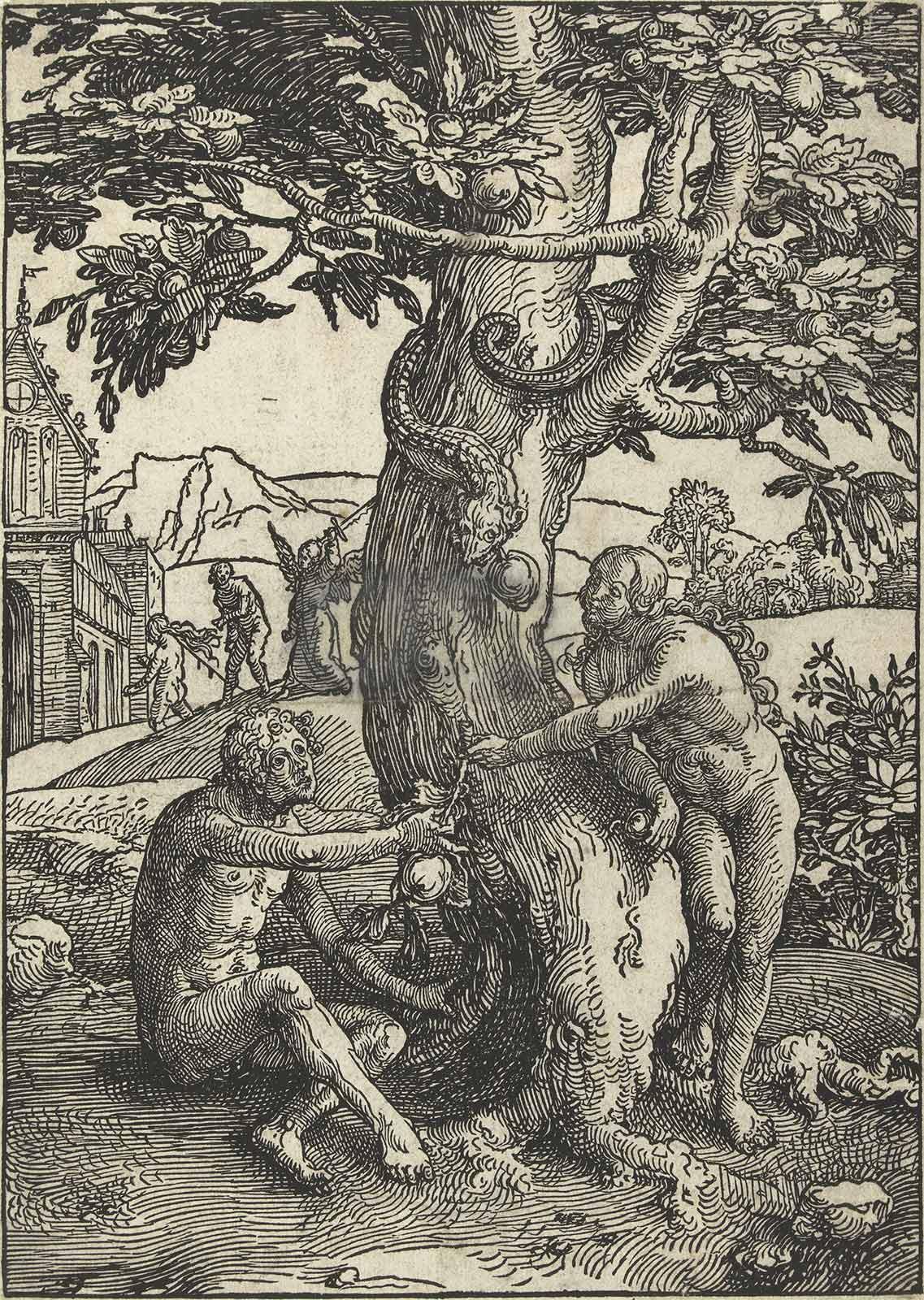
Another highlight in the use of the technique was the Japanese woodcuts of the Edo period (1603-1867), made by artists like Hokusai and Hiroshige. Japanese woodcuts were typically in colour. Vincent van Gogh admired these colourful prints, though he never made any woodcuts himself. He did however paint copies of the work of the Japanese masters. Influenced by Japanese woodcuts, Paul Gauguin and his contemporary Émile Bernard rediscovered the pure nature of this medium. Their woodcuts were no longer merely a poorer-quality version of engraving, but a means of launching an entirely new and spontaneous graphic language. Their urge to experiment paved the way for many artists who came after them. At this stage, use of the technique for reproduction declined in significance. To Norwegian artist Edvard Munch, for example, the wooden block became a canvas whose texture he used in his art, making repeated changes to the image. Each of his prints is therefore unique. Wassily Kandinsky's groundbreaking book Klänge (1913) combinates 38 poems and 56 woodcuts in which he explores the relationship between abstraction and figuration.
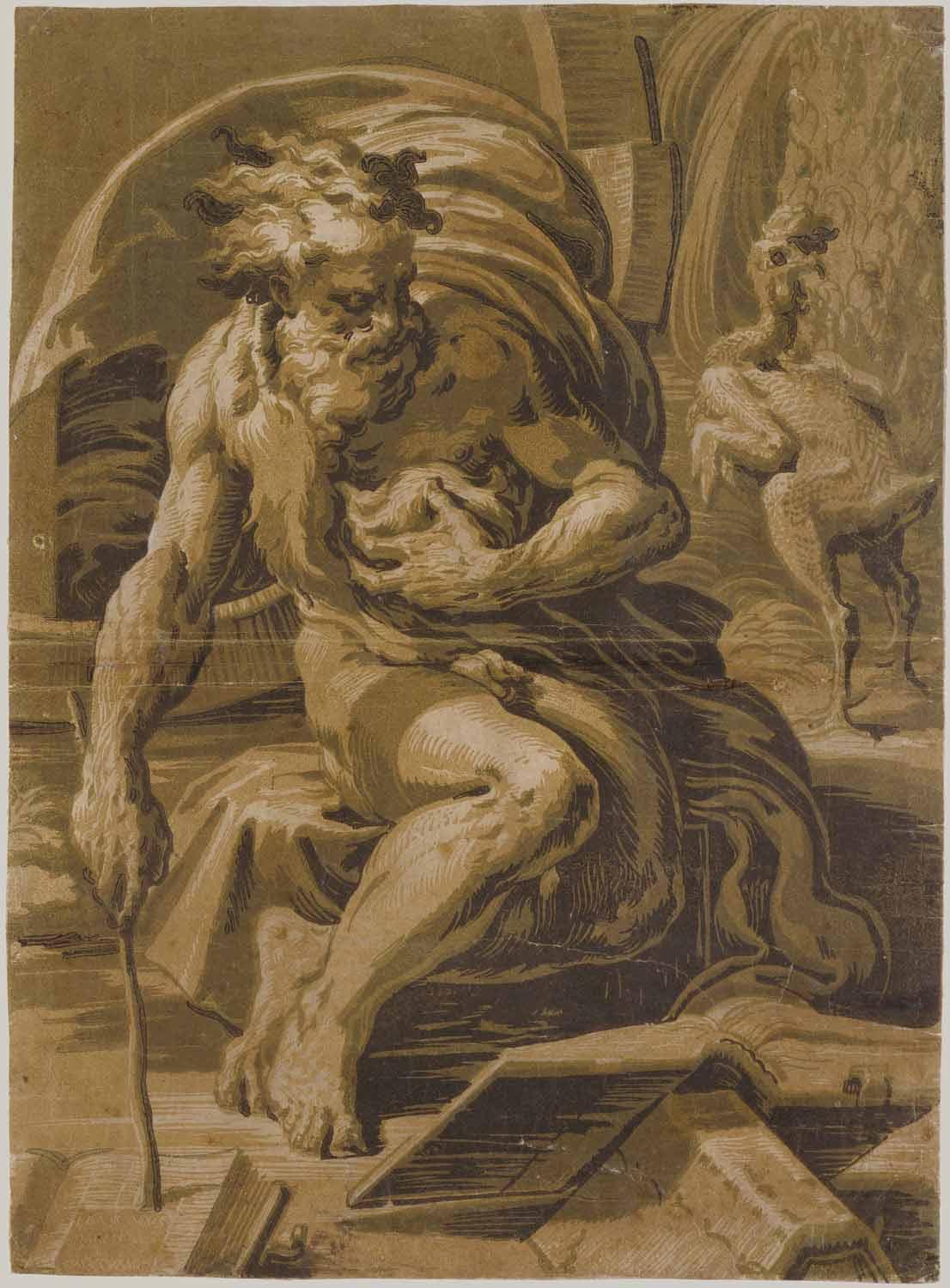
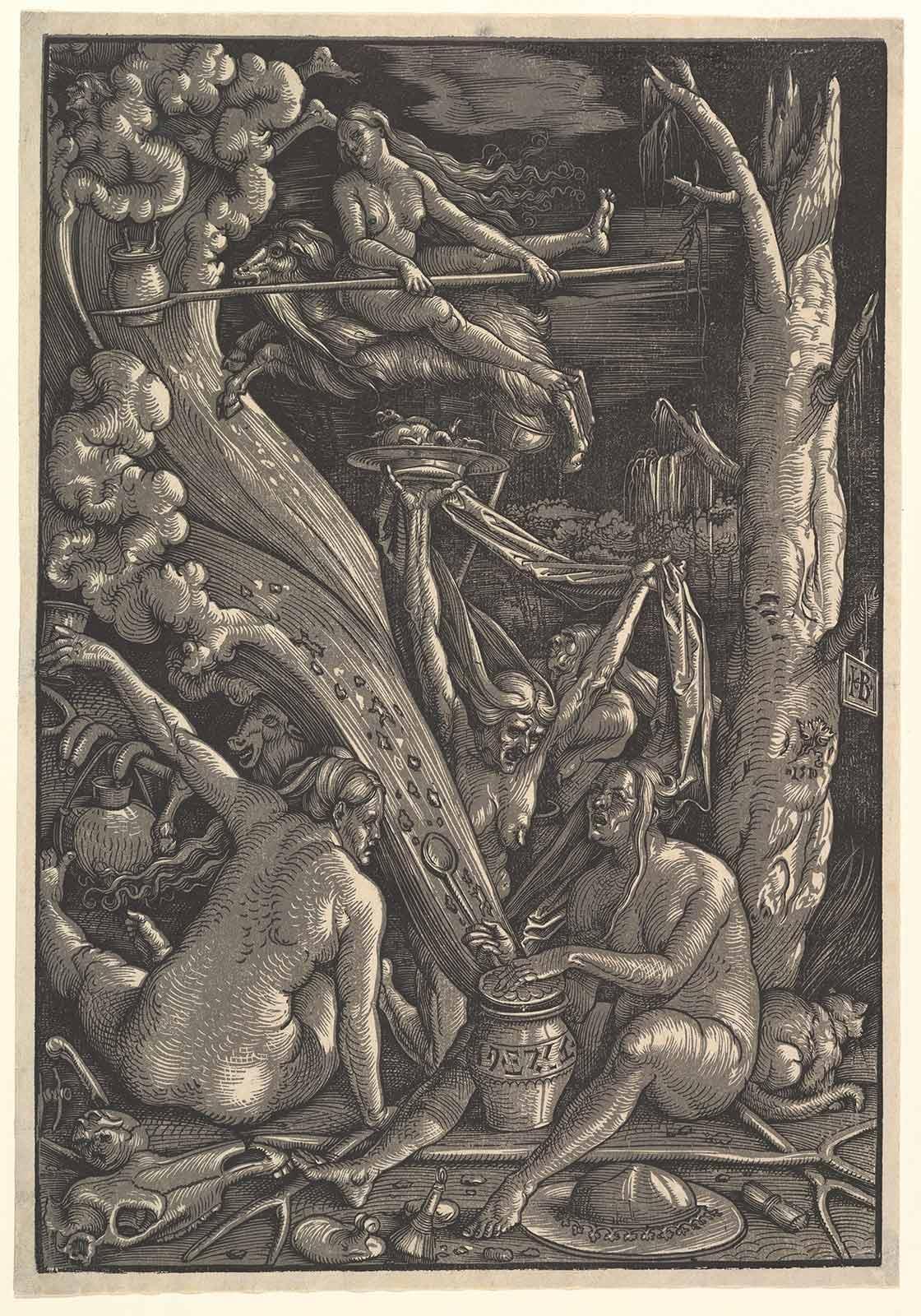

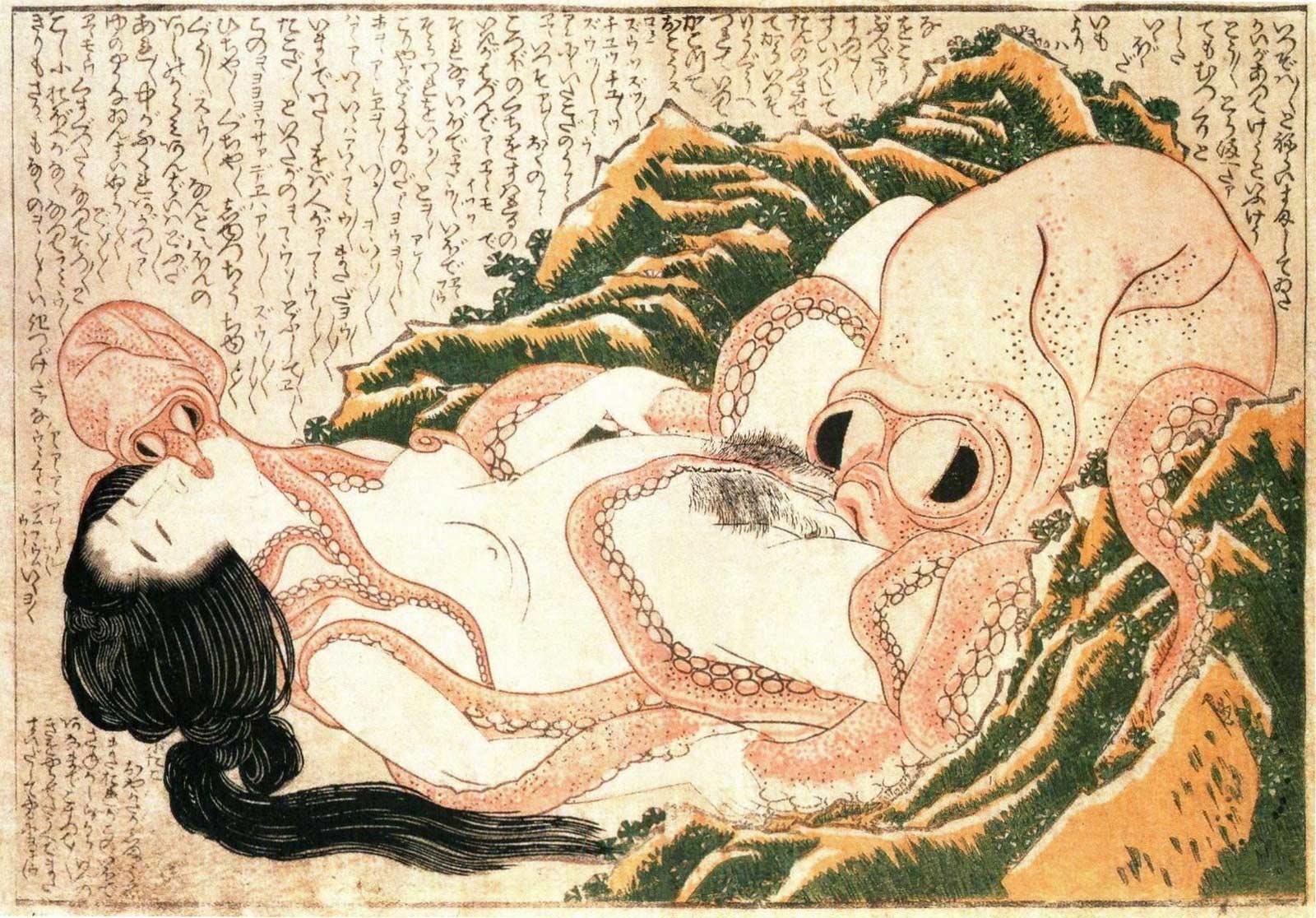
After the First World War the technique became popular among expressionist artists such as those affiliated to the group known as Die Brücke. The woodcut technique has always been popular in Germany. Famous German artists who used it included Albrecht Dürer, as mentioned above, and also Conrad Felixmüller, Erich Heckel, Ernst Ludwig Kirchner, Käthe Kollwitz, Emil Nolde and Joseph Beuys. In Flanders, Les Cinq – Jan-Frans Cantré, Jozef Cantré, Frans Masereel, Henri Van Straten and Joris Minne – created innovative work using the woodcut technique in the years following the First World War. In the Netherlands the northern Dutch artists’ collective De Ploeg rediscovered the potential of the woodcut and other graphic techniques in 1921, after they met Ernst Ludwig Kirchner. The De Ploeg calendar of 1926 is a highlight of their graphic experiments.
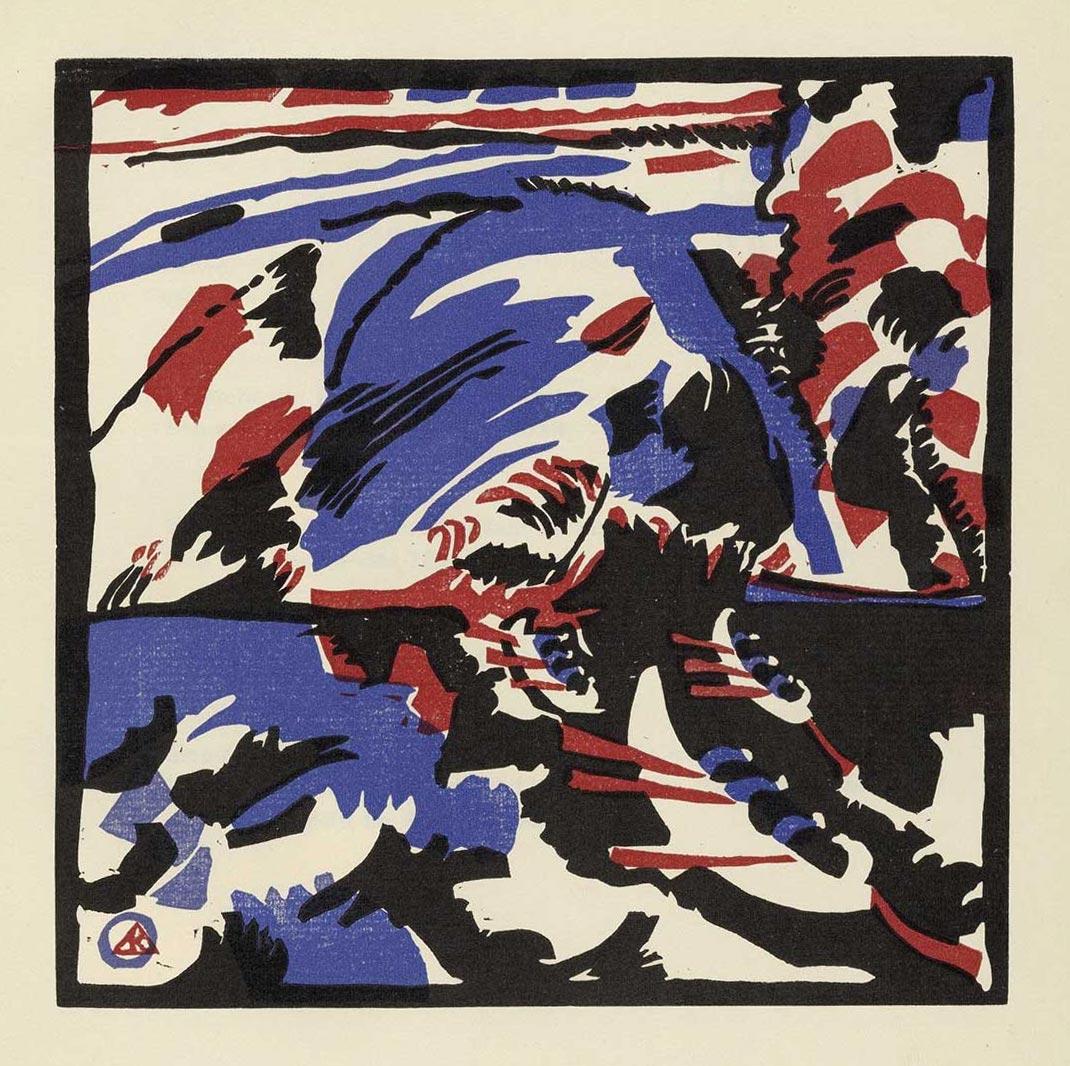
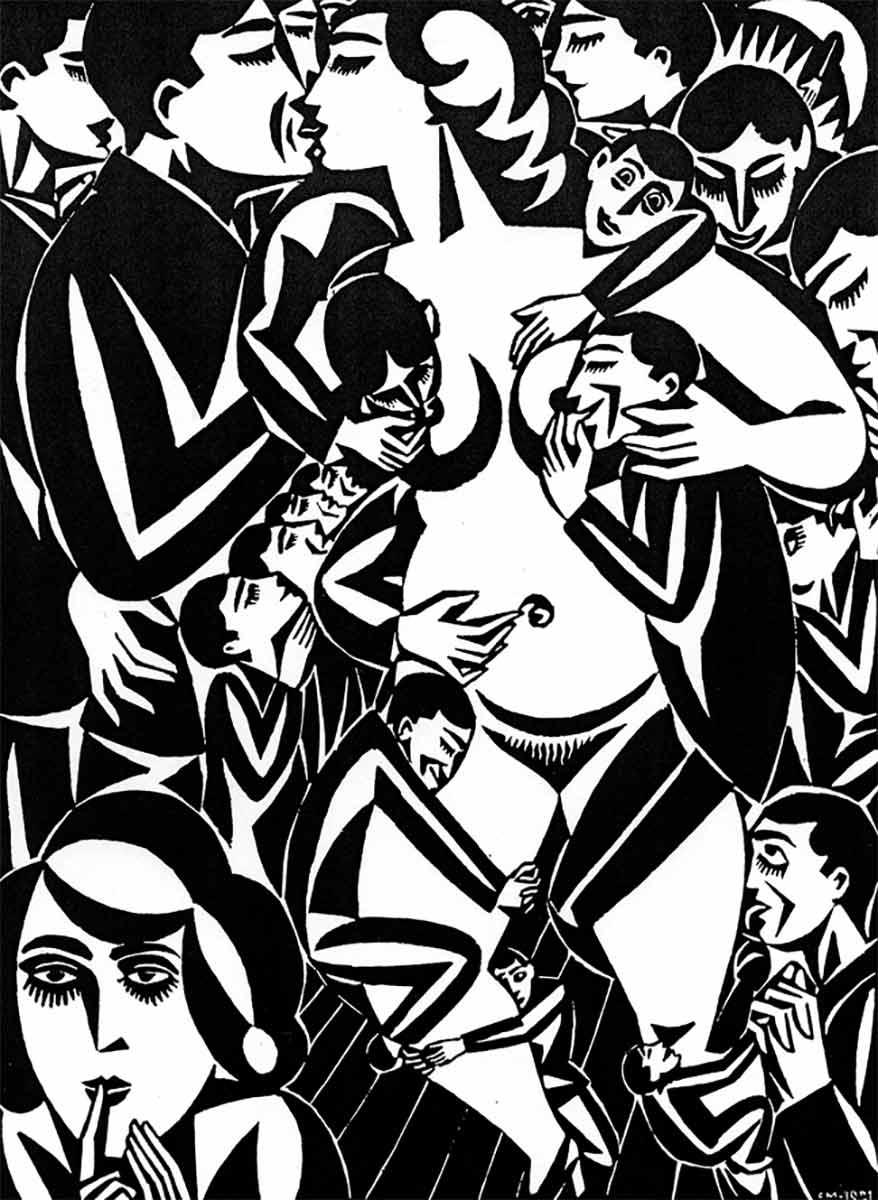
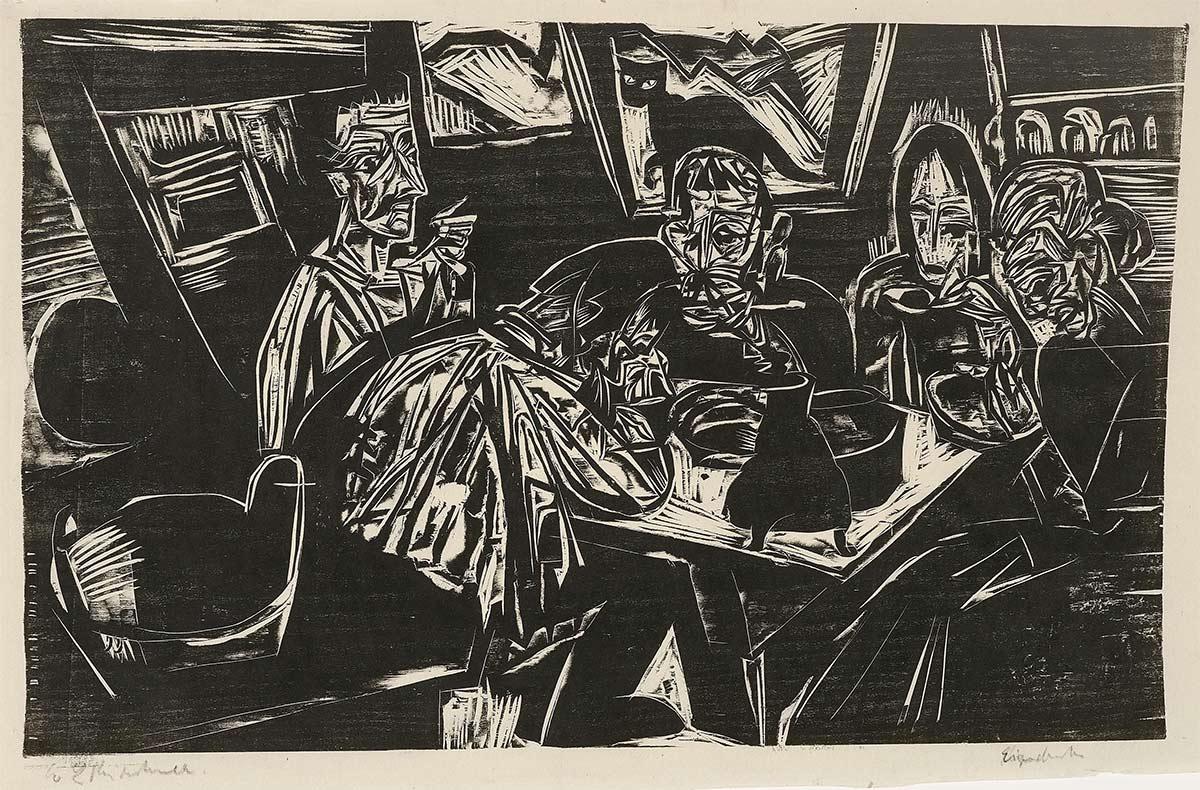
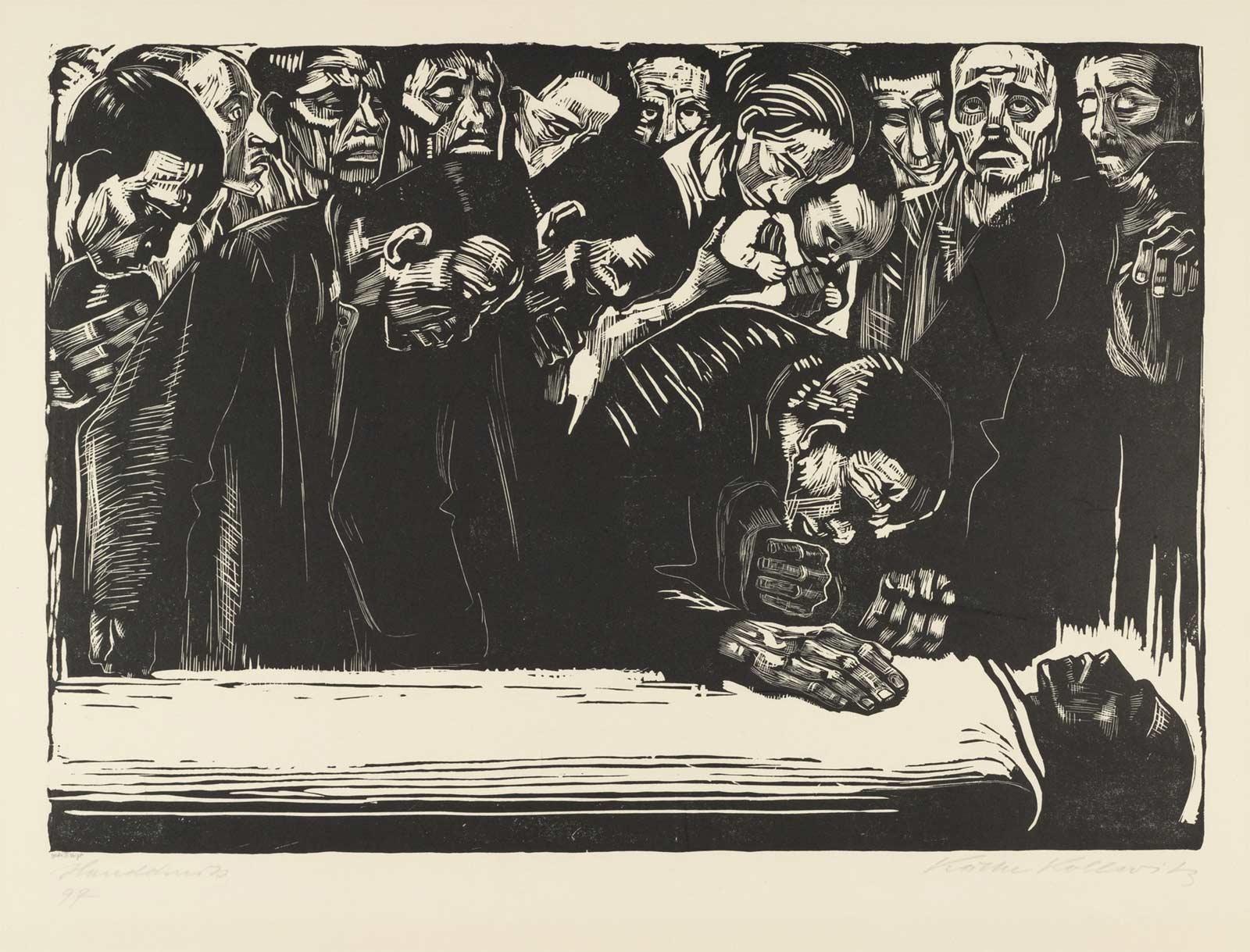
Few tools are needed to make a woodcut, and they are available to all. The ability to quickly create a strong image using the woodcut technique has long made it a favourite for activists and for propaganda. The woodcut is the ultimate art form of the people, as opposed to the elite, and it was often chosen for political as much as artistic reasons. Woodcuts have been used to spread a message in many popular uprisings, periods of social unrest or as a means of quiet resistance. Mexico was a particular source of inspiration, particularly after the Mexican revolution (1910-1920). Cuban artist Luis Peñalver Collazo depicted Latin America’s struggle against its imperialist oppressors in his print America Latina, Unete! (1960). The woodcut was also popular in other countries with Communist regimes, alongside other printing techniques. During the Sino-Japanese war (1937-1945) China used the woodcut as a powerful medium for criticising the Japanese invasion. The protest continued after 1945 when, though Japan had been defeated, the Kuomintang government was unable to alleviate the suffering of the Chinese people. Chinese artists drew inspiration from European artists Käthe Kollwitz and Frans Masereel. When the Chinese Communist Party came to power in 1949, the production of images using the woodcut technique became a propaganda vehicle that served to glorify the party and boost the morale of the people. A Biennial of Graphic Arts has been held in Ljubljana (now the capital of Slovenia) since 1955, making it the world’s oldest biennial exhibition of contemporary graphic art.

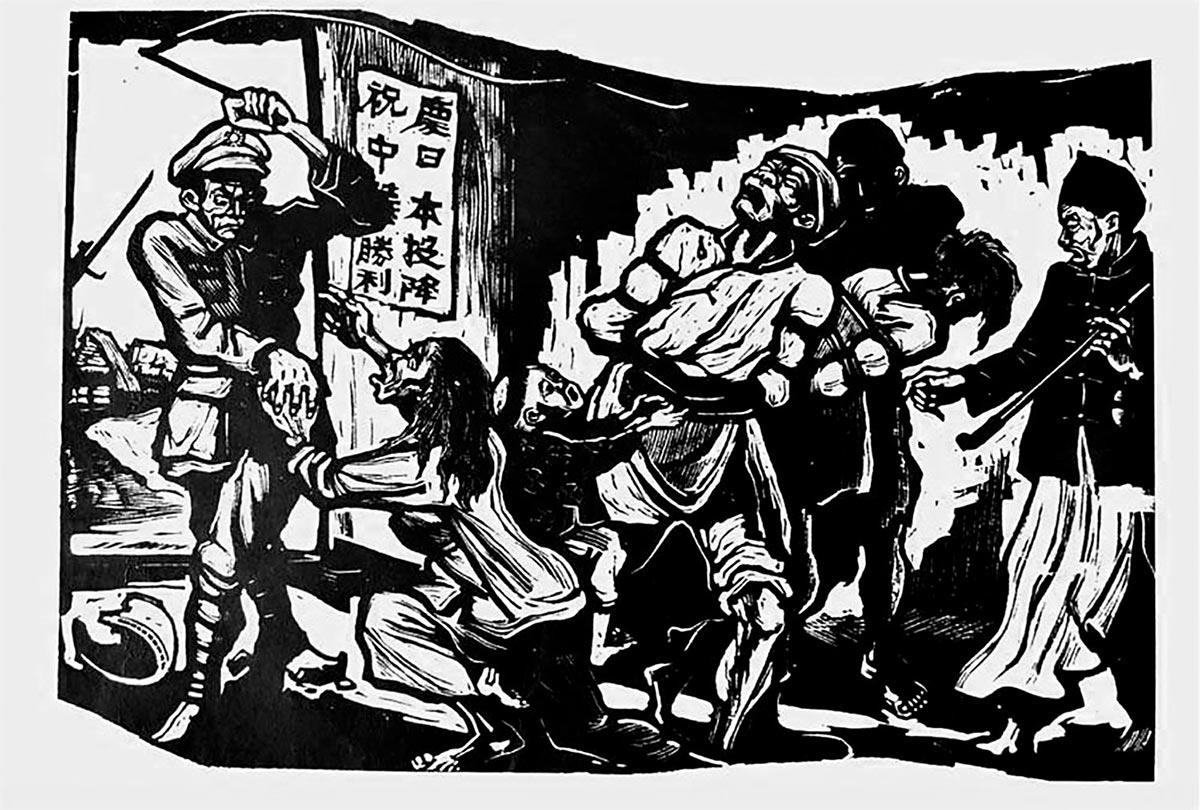
Contemporary artists are also interested in wooden blocks as a medium for printing images. They include conceptual artists such as Chuck Close, who died in 2021. After his early success with painting, he started using printing techniques like mezzotint, linoleum cuts and woodcuts. Close based his prints on photographs which he would divide into individual, fairly abstract images that he would reproduce on wooden blocks and then print to recreate the whole image. The individual elements remain visible from close by, but merge into a new image when viewed from a distance.
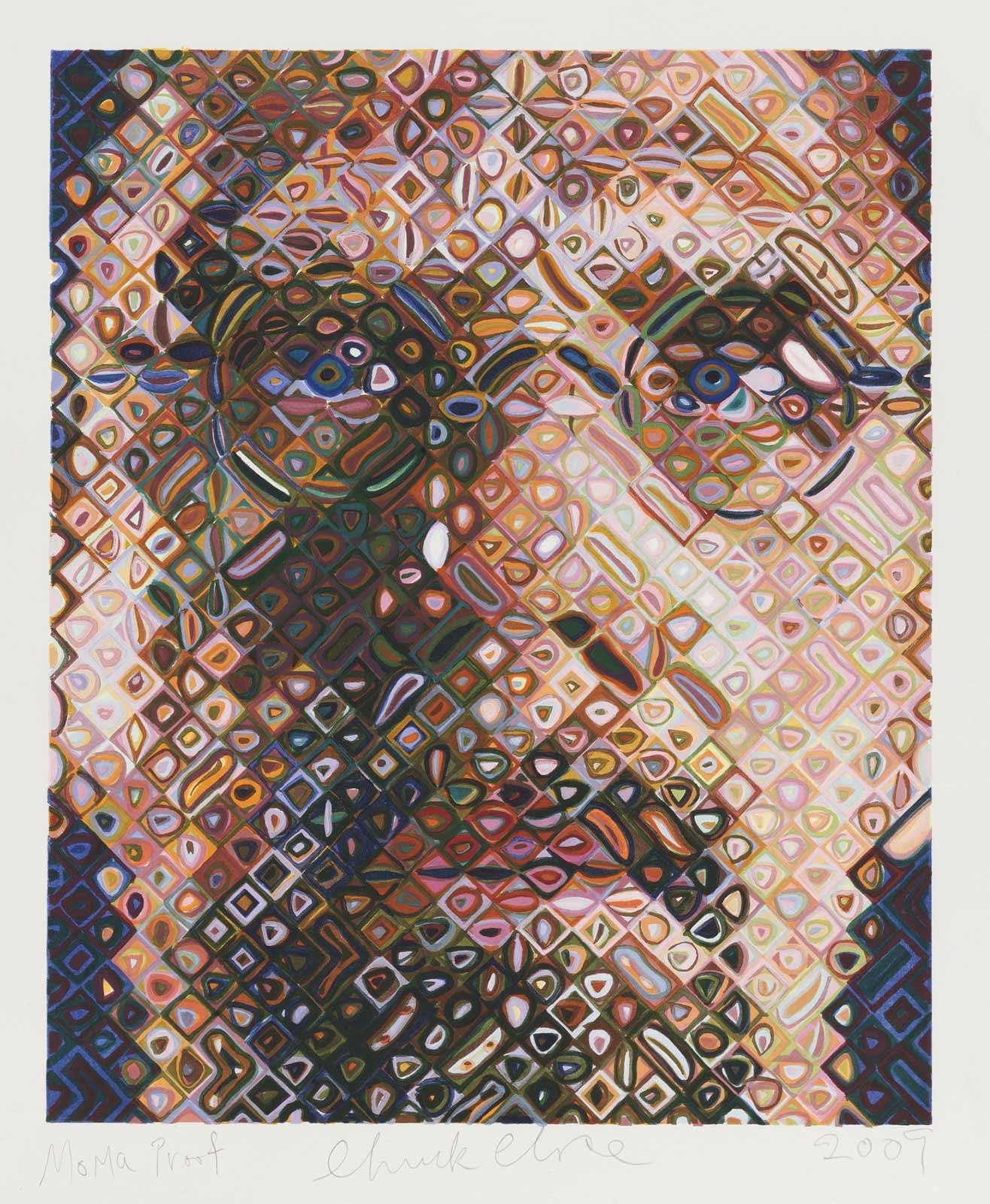
More techniques
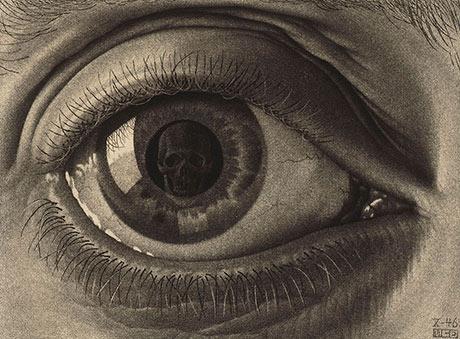
Mezzotint
Escher used the mezzotint technique for the first time in 1946. In this special, labour-intensive intaglio technique, the surface of a copper plate is roughened using a rocker. The raised edges along the incised lines are known as burrs. A lot of ink is caught by the burrs, leaving a deep black on the paper when printed. Lighter areas are created by removing the burrs using a sharp scraper.

Linocut
Escher began his career as a printmaker in 1916, at the age of 17, with a linocut portrait of his father. The linocut or lino printing technique is a relief printing technique in which parts of a piece of linoleum are cut away to create the image. The technique is similar to the woodcut. However, because linoleum is softer, it is easier to cut than wood.
